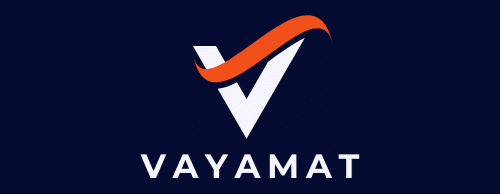What Are the Nutritional Requirements for Adolescent Triathletes in Growth Spurts?

As the guardians and coaches of young athletes, many of you often grapple with the challenging quest of ensuring that these adolescents are well-nourished. This can be especially tricky when dealing with triathletes going through growth spurts. Why? Because the nutritional requirements for these growing children are uniquely different from those of their non-athletic peers and even adult athletes.
This article aims to provide a comprehensive guide, grounded in scholar research and studies, on the specific nutritional needs of adolescent triathletes during their growth spurt phase. This information is meant to provide you with valuable insights to help ensure optimal health and performance for these young athletes.
A lire également : What’s the Most Effective Breathing Technique for Deep Sea Divers?
The Importance of Nutrition During Adolescence
Adolescence is a critical growth period, marked by rapid physical, cognitive, and socio-emotional changes. Nutrition plays a cardinal role in supporting these changes.
A research study carried out by PubMed highlights that the nutritional requirements of adolescents are higher during the second decade of life than at any other time, except during pregnancy. This is due to the rapid growth and development experienced during this stage.
Lire également : How Can Nanotechnology Be Applied to Develop Lighter Racing Bikes?
Inadequate nutrition can stunt growth, delay sexual maturation, and cause a myriad of health problems. It is, therefore, imperative to ensure that adolescents receive a diet that meets their increased energy and nutrient needs.
For athletes, the stakes are even higher. Their energy and nutrient needs are elevated due to the demands of intensive training and competitions. They require additional nutrients for growth, tissue repair, and energy production. The challenge, therefore, lies in finding the right balance to fulfill these needs.
Understanding the Nutritional Requirements of Adolescent Athletes
Training and competing in triathlons require a lot of energy. Triathletes, even adolescents, often have training schedules that require intense sessions in swimming, running, and cycling.
According to an PMC study, adolescent athletes require more calories than their non-athletic peers due to the increased energy expenditure associated with training and competition. A study published in Crossref corroborated this finding, showing that adolescent athletes require 500 to 1,500 more daily calories, depending on their age, sex, and training intensity.
For instance, a 16-year-old female athlete in a heavy training phase may require up to 3,500 calories per day, while a 14-year-old male athlete may need up to 5,000 calories.
The quality of these calories is equally essential. The Crossref study emphasized the importance of a balanced diet rich in carbohydrates, proteins, and fats. Carbohydrates function as the primary fuel source for exercising muscles, proteins aid in muscle repair and growth, while fats serve as a supplementary energy source.
Addressing Key Nutrients: Iron, Calcium, and Vitamin D
Beyond the macronutrients, adolescent athletes need to pay keen attention to certain micronutrients. Iron, calcium, and vitamin D are crucial nutrients for this age group, for both their athletic performance and overall health.
Iron is a vital component of hemoglobin and myoglobin, proteins responsible for oxygen transport. Adolescents, especially female athletes, are at an increased risk of iron deficiency due to menstrual losses and inadequate dietary intake. Iron deficiency can compromise athletic performance and cognitive development.
Calcium and vitamin D are fundamental for bone health. Adolescents are in their peak bone-building years, and inadequate intake of these nutrients could result in weak bones, increasing the risk of fractures and osteoporosis later in life.
Tailoring the Diet to the Adolescent Triathlete’s Needs
Every adolescent athlete is unique, and their dietary needs will vary depending on their age, sex, training intensity, and individual health status. It is important to tailor their diet to their specific needs and monitor their growth and health regularly.
For instance, female athletes require more iron due to menstrual losses, while younger athletes may need more calcium and vitamin D for bone growth.
According to a study published in the Sports Scholar journal, adolescent athletes should have their growth and nutritional status regularly monitored to ensure they are meeting their nutritional needs and maintaining optimal health.
In conclusion, understanding the nutritional needs of adolescent triathletes during their growth spurts can significantly enhance their performance and overall health. It is crucial for parents, coaches, and the athletes themselves to be aware of these needs and work together to ensure they are met.
The Impact of Physiological Stress on Nutritional Needs
Adolescent triathletes are subjected to intense physiological stress due to their rigorous training and competitive events. This can have significant implications on their nutritional needs. Notably, the impact of such stress is more severe during growth spurts, thereby further increasing their nutritional requirements.
A systematic review published on Crossref Google suggests that these athletes often experience increased muscle breakdown, inflammation, and oxidative stress. These factors can significantly influence their nutritional status, demanding an increase in energy and nutrient intake.
For instance, the body needs additional protein to repair damaged muscles and support new muscle growth. Antioxidants, such as vitamin C and E, are necessary to combat oxidative stress and support recovery. Essential fatty acids, like omega-3 and omega-6, help in managing inflammation and are crucial for brain health, which can be compromised due to the physiological stress of training.
Moreover, the body loses essential minerals like sodium, potassium, and magnesium through sweat during physical activity. These are crucial for maintaining electrolyte balance and muscle function. As such, athletes should ensure their diet includes foods rich in these minerals or consider supplementation under professional guidance.
Practicing proper hydration is also of paramount importance. According to an article on PubMed Crossref, dehydration can harm performance, cognitive function, and pose serious health risks. Adolescent athletes should, therefore, ensure they consume enough fluids before, during, and after their training and competitions.
The Consequences of Disordered Eating in Adolescent Athletes
Adolescents, particularly female athletes, are susceptible to disordered eating due to societal pressure, performance anxiety, and body composition concerns. An article on PMC Free underlines that this can have serious implications on their health, growth, and performance.
Disordered eating can lead to energy deficiencies, nutrient imbalances, and weight fluctuation, which can adversely affect their growth and development. It can also heighten the risk of injuries, illness, and delay recovery.
Furthermore, it can lead to a condition called Female Athlete Triad, characterized by menstrual dysfunction, low energy availability (with or without disordered eating), and decreased bone mineral density. This condition can have long-term consequences on the overall health and well-being of adolescent girls.
It is crucial to promote a positive body image and encourage healthy eating habits among adolescent athletes. Regular monitoring of their nutritional status and growth is essential to identify and address any potential issues early. Professional support, including dietitians and psychologists, can play a vital role in ensuring their physical and mental well-being.
Conclusion
Ensuring the optimal nutritional status of adolescent triathletes during their growth spurts is a task that requires profound knowledge and careful monitoring. These young athletes have unique nutritional needs that must be met to support their intense training, physiological stress, and rapid growth development. Furthermore, addressing potential issues like disordered eating is crucial to safeguard their health and performance.
Embracing a balanced diet rich in essential nutrients, practicing proper hydration, and incorporating professional support can go a long way in ensuring the health and success of these promising athletes.
In a nutshell, it is not just about winning the race but also about nurturing these adolescents to become healthy, resilient adults. Let’s work together to support the champions of the future.
